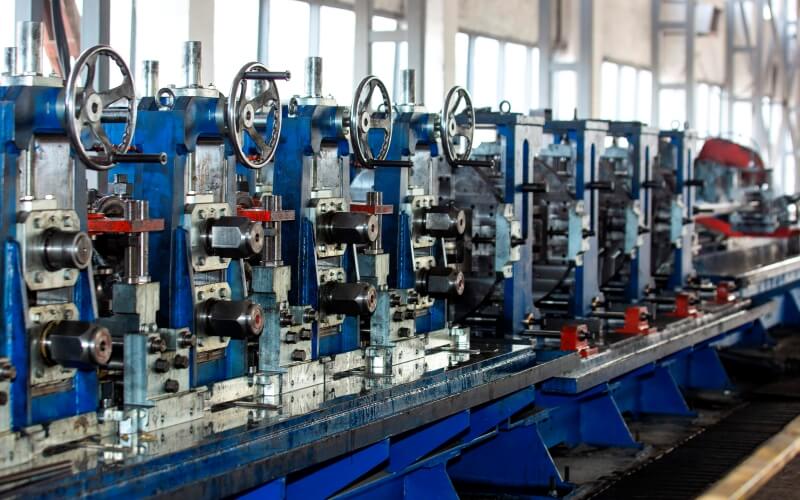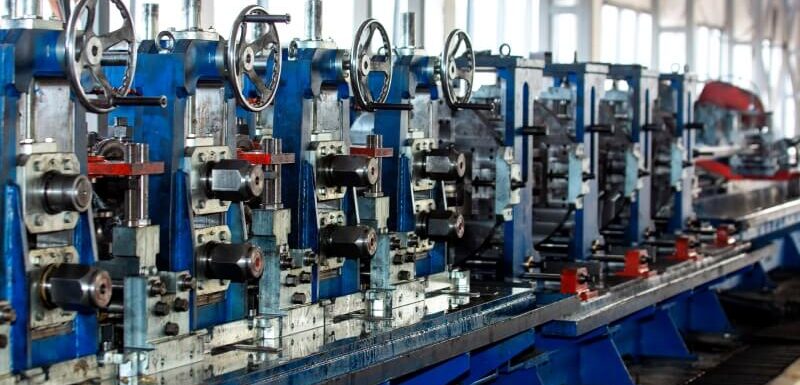
You've probably heard of MRP II if you're running a manufacturing business. But what does it signify for your company? And how can you ensure that you're taking advantage of all that MRP II offers?
In this article, we'll look at what MRP II is and how it may benefit your company. We'll also compare MRP I with MRP II to help you comprehend the distinctions between the two methodologies. So, let's get this party started!
What is MRP II?
Manufacturing Resources Planning, or MRP II, is a management tool that allows manufacturers to plan and manage their manufacturing resources. This covers items like raw materials, production equipment, and labor. As a result, businesses may use MRP II to utilize their resources better to create goods.
Where Did MRP II Originate?
The material requirements planning (MRP II) system is an expansion of the first materials requirements planning (MRP I) method.
MRP was developed in the 1960s after studying Toyota's manufacturing processes in Japan. When materials for products were readily available in quantities precisely required for orders, usually known as Just In Time (JIT) inventory, and when such orders might be scheduled and delivered without delay, production was said to operate at its maximum potential.
By 1981, MRP had been implemented by over 8,000 organizations worldwide, and the program had evolved to use the more complex version of MRP II, created by Oliver Wright and George Plossi.
What is the significance of MRP II?
The drawbacks of MRP II are based on the belief that peripheral elements can significantly influence a production environment's performance.
MRP II extends the idea of Just in Time beyond inventory to include a Just in Time evaluation of the availability and capacity of personnel and machines, coordination for the arrival of raw materials, and so on.
MRP II is crucial to manufacturing firms for a variety of reasons. Here are some more:
- By reducing waste and increasing efficiency, it may help businesses save money.
- MRP2 can assist firms in improving the quality of their items by ensuring that all resources are utilized to their full potential.
- Ensuring that materials are always available when needed can assist enterprises in better managing their inventory levels.
- Finally, MRP II may assist firms in improving customer satisfaction by ensuring that goods are delivered on schedule and fulfill customer needs.
How does MRP II work, exactly?
MRP II is a computer-based system that uses data from a variety of sources to produce manufacturing resource plans. These designs are then utilized to manage and control the usage of resources.MRP 2 systems are built in a modular fashion.
The following are some of the most common modules that make up an MRP 2 system:
- The Master production schedule (MPS), or the Main Production Plan.
- The articles database is a repository of information.
- The production cycles (Routings)
- The stock situation
- Purchasing Management
- The Material Requirements Planning (MRP I)
- The Bill of Materials (BOMs)
- The Shop floor control, or the production order management system.
- Capacity planning is the resource planning system.
The fundamental principle of the system, MPR logic, has not changed. However, MRP II includes the following improvements:
- Support for MPS activities, with the ability to compare planning aggregate for families of goods against actual output.
- Based on anticipated manufacturing purchases and current shopfloor orders, a CRP (Capacity requirement planning) module will evaluate the workload of the different production work centers.
- Shopfloor Order Execution monitoring (Production activity control)
We'll concentrate on the CRP and PAC modules
1) Planning for capacity requirements
The capacity analysis allows you to assess the availability of machines and labour in relation to capacity limits for machine and manpower availability. It necessitates correct knowledge and depiction of the products' manufacturing cycles as well as the production capability of individual production work centers (machines and work shifts).
The load calculation for each production work center is based on the single operations of the working cycle. In many MRP 2 systems, this is accomplished by using "infinite capacity" (assuming that a production work center is "always" available).
MRP 2 systems, such as Beas Manufacturing, can integrate with finite capacity scheduling. In addition, this software accounts for the actual manufacturing capabilities and shop floor restrictions.
The CRP employs a mathematical programming model (APS - advanced planning and scheduling) to attempt load optimization in the event of a capacity constraint or an excessive demand on a production work center.
The CRP needs information for two reasons:
- You can use it to check the production planning and, if required, make changes (for example, by changing the production cycle of a product or redistributing some operations to other machines).
- It supports the next stage, Production Activity Control.
2) Control of production activities
The Activity Control (PAC) modules have a dual purpose:
- Provide information to the shop floor about the planned production.
- Collect information from the shop floor on the completed production to transfer this information to the CRP module responsible for planning the production.
It also involves giving information about the shop floor, which essentially entails determining and updating manufacturing orders' priorities to allow for the scheduling of operations (which may be accomplished with the Beas Manufacturing pool report module).
The PAC module gathers data from the shopfloor on how manufacturing orders are progressing (can be done with Beas Manufacturing terminal and web apps for reporting times and completed quantities).
The political action committee's data is critical for two reasons:
- It allows you to modify the expected finish date of a production order and reschedule other production orders that were waiting for completion.
- Second, the CRP module utilizes this data to re-optimize production loads in response to the current situation.
What is the distinction between MRP I and II?
The primary distinction between MRP I and II is that MRP II systems are more advanced. They need more information and take longer to put it into place. Despite this, MRP II is worth considering for businesses that wish to improve their manufacturing processes because of the advantages it offers.
MRP II includes features that MRP I does not, such as capacity planning and shop floor order execution monitoring. These capabilities enhance MRP II's capacity to manage manufacturing activities even more than MRP I.
The MRP II software has largely replaced MRP I. The majority of MRP II systems provide all of the functionality of an MRP system, including basic production planning, bill of materials (BOM), and inventory monitoring.
MRP II can consider variables that MRP is not taking into account, including machine and staff availability, providing a more realistic and holistic representation of a company's operational capabilities.
The powerful software also allows users to simulate variables and watch the impact downstream, which is a typical feature of MRP II solutions (what-if scenarios).
In simple terms:
I highlighted the following three essential aspects:
- Mps
- Bill of materials
- Inventory monitoring
All of the preceding features are included in MRP II, as well as the following:
- Machine capacity planning
- Production activity control in real-time
In conclusion
MRP II is a more comprehensive and holistic view of the manufacturing process. It includes features that assist planners in optimizing production plans and tracking progress on the shop floor.
Taking a holistic approach to the manufacturing process, MRPII systems may optimize production schedules and track progress in real-time. This allows organizations to react quickly to consumer demand fluctuations and avoid supply chain disruptions.
Do you believe your company could benefit from MRP II?
Contact us for a demo today!

